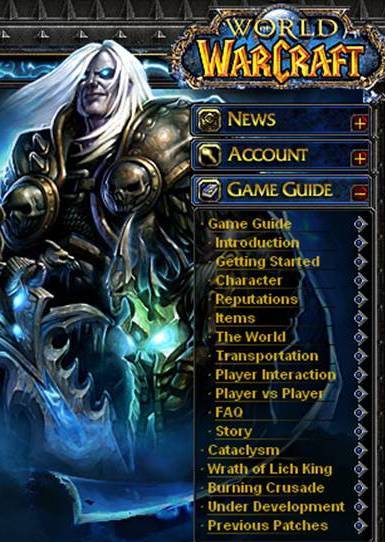Recently I attended a Classroom2.0 Live session where Barbara Bray was the featured guest. Barbara, a learning strategist from California, spoke on the topic of “Joy in Learning” (session recording here)and the importance of play in the learning process. In her post Full Steam Ahead: The Power of Play, she says:
Schools in the US are designed around the industrial model where the teacher is the all-knowing expert delivering instruction to meet the standards and tests. With this model, students are learning the same thing at the same time. If schools are going to produce a new type of worker who can deliver what people need on-demand where they personalize each situation for each user, they will need a different kind of education system than we are delivering now. Students will be active learners designing their own learning environments based on their needs and finding the most creative learning environments that build on their strengths.
Play and bringing back joy to learning is what schools have to do to prepare our future citizens. When you are involved in playing a game with your friends, how do you feel? Watch children play and interact with other children. They are fully engaged and probably remember those activities for a long time. Ask a child if they remember the worksheet they filled out last week. Was that fun? Do they remember the answers? Schools need to provide engaging activities that turn students into critical thinkers, researchers, and designers.
A few posts later she also mentions Sir Ken Robinson’s “Changing Education Paradigms” (love those RSAnimate videos!) which addresses the same concerns.
Fun and learning can not be opposites. We need to find ways to engage our students the same way that their out of school activities engage them. Perhaps we can take some lessons from gaming strategies.
Tom Chatfield, in his TED talk of July 2010, says we can learn things about “learning” by studying video game strategies. The seven lessons he sees in video games are:
1. Experience bars that measure progress – Players associate themselves with this progress; they take ownership of it.
2. Multiple long and short term aims – Goals are varied.
3. Rewards just for trying – Failure is not punished.
4. Feedback – rapid, frequent, and clear
5. An element of uncertainty – This “lights up” the brain and the concept is a “neurological gold mine”.
6. Production of dopamine in the brain – Studies of dopamine levels predict how memory and confidence figure into learning.
7. Other people! Collaboration with other gamers, working as a team is a big turn on.
Wanting something + liking the activity = ENGAGEMENT.
Game designer David Perry in 2006 said the average age of gamers was about 30, and 43% of them were women. There are millions of adults involved in World of Warcraft, for example, and they are paying thousands of dollars for virtual property in online games and virtual worlds. He also asserted that 83% of games have no violence or mature content. Another fun and thought-provoking presentation on the power of games was that of Jane McGonigal “Games Can Make a Better World“. According to McGonigal, ” In the best-designed games, our human experience is optimized: We have important work to do, we’re surrounded by potential collaborators, and we learn quickly and in a low-risk environment. ” Sounds like a great description for school.
Perhaps educators would do well to investigate what games their students are playing and why they find them so engaging. I asked some seventh grade students recently about their gaming interests, and the serious “gamers” were about falling out of their chairs to tell me about them, they were so excited to share. On the other hand, one boy said he was not allowed to do any gaming (Also not allowed to blog in school, but that is another story!). I asked a fifth grader when he wanted to title his blog “Spore Guy” if he meant “Sport Guy”. He actually meant Spore, a virtual gaming environment about evolution created by Will Wright, and that he really was good at that game. Needless to say, I had to check out Wright’s explanation of Spore.

Can we find ways to take the ideas of not punishing failure but instead rewarding effort, of scaffolding so that challenges we present are not too difficult but also not too easy for the individual learner, and get students excited about engaging in collaborative activities not only with classmates but with other students around the globe? Maybe by getting involved in some gaming ourselves and trying it out, we can sense the power of these activities and see how we can up the engagement level of our students.
There are many great ideas being shared in the Global Education Conference going on this week (Nov. 15- 19) for ways to have our students collaborate and engage in real world problem solving. ISTE’s Don Knezek had a great presentation (archive here) on Nov. 15 regarding using digital learning environments to engage students in authentic projects and solving problems that really matter. One of his “Many Faces of Innovation” – a list of ideas that we can be incorporating into 21st century education – is “students learning through simulations and serious games”.
 Whether it be collaboration and creation in virtual worlds such as Reaction Grid or Quest Atlantis, or something as simple as creating a glog in the classroom, students need to buy into the goal and enjoy doing the activities that help them reach it. I missed the session by Peggy Sheehy and Lucas Gillispie on World of Warcraft in Education yesterday during the Global Education Conference (archive here) but I am hoping to catch the presentation “live” on ISTE Island in Second Life tonight (Nov. 16) at 5 SLT (8 pm Eastern). I confess to having lost track of time myself when creating things in that virtual world.
Whether it be collaboration and creation in virtual worlds such as Reaction Grid or Quest Atlantis, or something as simple as creating a glog in the classroom, students need to buy into the goal and enjoy doing the activities that help them reach it. I missed the session by Peggy Sheehy and Lucas Gillispie on World of Warcraft in Education yesterday during the Global Education Conference (archive here) but I am hoping to catch the presentation “live” on ISTE Island in Second Life tonight (Nov. 16) at 5 SLT (8 pm Eastern). I confess to having lost track of time myself when creating things in that virtual world.
Do you play any online games? Participate in virtual worlds? Feel a sense of immersion and a rush when accomplishing a goal or mastering a level in a game? Maybe you get that same sense of accomplishment and exhilaration after a great round of golf or a completing a do-it-yourself project.
My post title is from a quote attributed to George Bernard Shaw: We do not stop playing because we grow old; we grow old because we stop playing. Let the games begin!
Patti – thank you for taking my talk to the next level. You referred to video games and some great examples. I’m on a mission to bring joy and creativity back to learning. Appreciate you sharing the seven lessons from Tom Chatfield.
Pingback: Tweets that mention We Grow Old Because We Stop Playing | Blackberry Alley -- Topsy.com